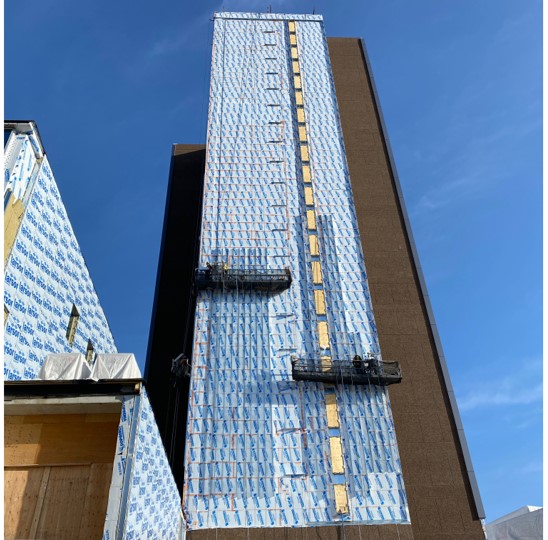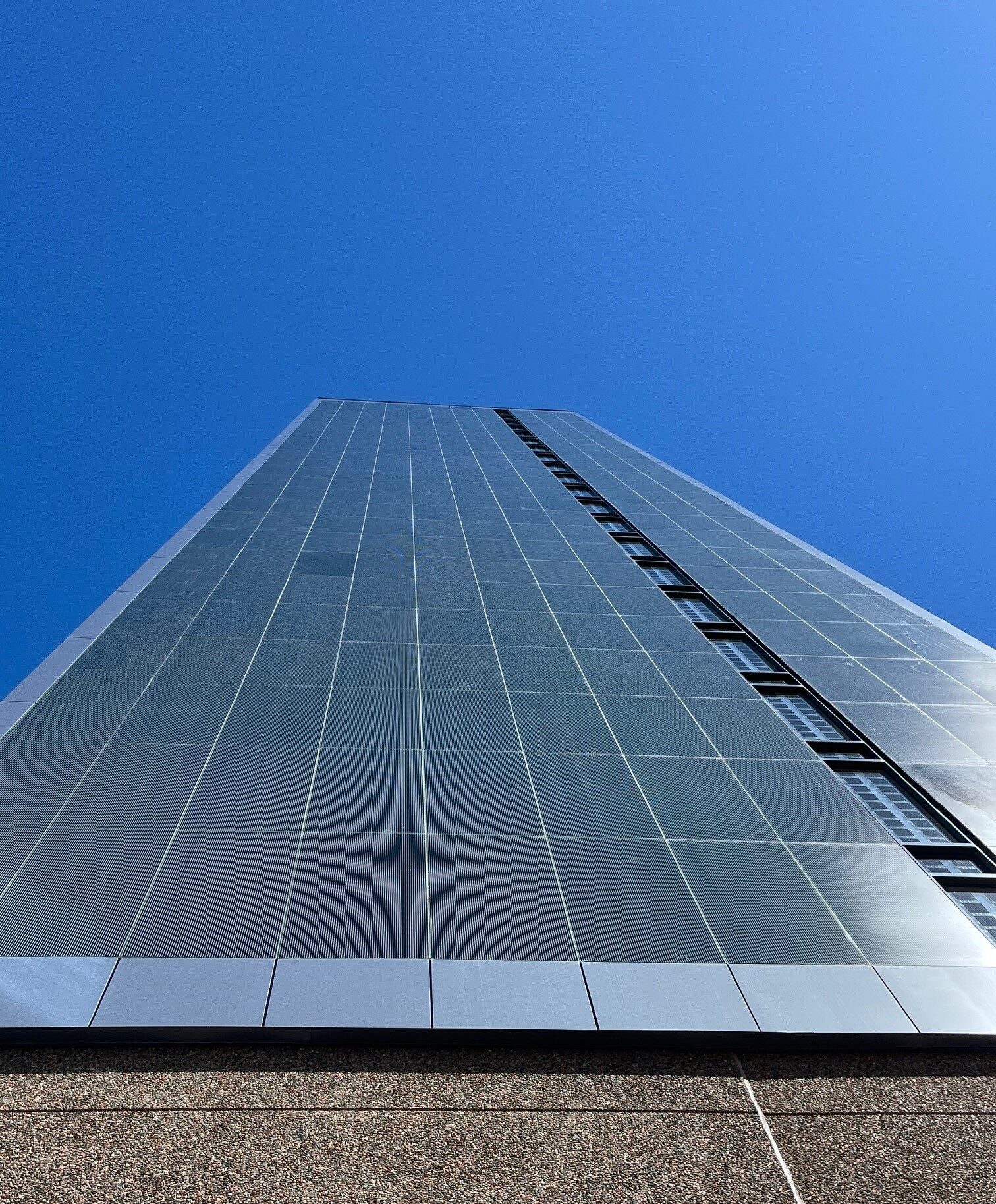Saint Mary’s University Loyola Residence Recladding
Projects Sponsor
When it came time, and it definitely was time, for Saint Mary’s University (SMU) to renovate a 22-story student residence on their campus, they chose to frame the project as an opportunity. The building was more than 50 years old, with all the leaks, reduced structural integrity and poor thermal performance that often comes with that. The University understood that by undertaking the renovation through the lens of sustainability—reducing their carbon footprint and improving climate resilience—the rebuild would best serve the campus community and the planet – and by being a bit bolder, it could also serve as a model for future projects around the globe.

That’s why, in addition to addressing the challenges and risks that come with rebooting a half-century-old structure, the Saint Mary’s University team opted to look at using sustainable alternatives for the building’s new cladding, which is when the integrated photovoltaic facade came into the picture.
Building-integrated photovoltaics (BIPV) are solar power generating systems integrated into a building’s envelope, including facades, windows and century roofs, among other possibilities. When the Saint Mary’s design team learned that several new construction buildings in Western Canada had successfully implemented BIPV, they undertook extensive research on how it could be used in a retrofit, and doing just that, ambitiously, became part of their plan. Beyond saving energy, the Loyola residence building would, for a time, be the tallest solar-integrated building in North America.

Safe removal of the existing precast concrete façade on the south wall was one of the early steps in the construction process. Next, the wall had to be prepared to accept the new Mitrex-manufactured BIPV façade. This required enhanced insulation, waterproofing and running electrical conduit. It was also decided that a row of windows (also integrated with PV) should be added to the design, bringing natural light to the stairwell. These windows have visible photovoltaic elements enabling occupants to see the electrical production elements up close, because some (read: all the best) educational institutions can’t help but turn everything into a lesson.
Because they could be installed from swing staging, installation of the main BIPV panels progressed swiftly. In the final stages, it came time to make connections to the inverters and integrate the system with the SMU electrical grid.

Electrical production is expected to exceed 100,000 kWh per year. Improved thermal efficiency of the building’s envelope (and accompanying improved comfort for the building’s occupants) has been realized and the project’s reception by the community has far exceeded expectations. Enthusiastic support has come from all corners, including faculty, staff, students, and neighbours. Inquiries from institutions, students, and consultants from across Canada and the USA have been overwhelmingly positive.
The installation was named the tallest building with BIPV in North America at the time. The project won the Nova Scotia Lieutenant Governors Award for Engineering Excellence. SMU has installed a display in the building lobby including a sample BIPV panel – a live display of electricity generation and an infographic. This display will help inform students, faculty and staff of the impacts of this new green technology.
It’s safe to say Saint Mary’s University has produced a 100,000-kWh-bright shining example of how to teach an old building new tricks.













